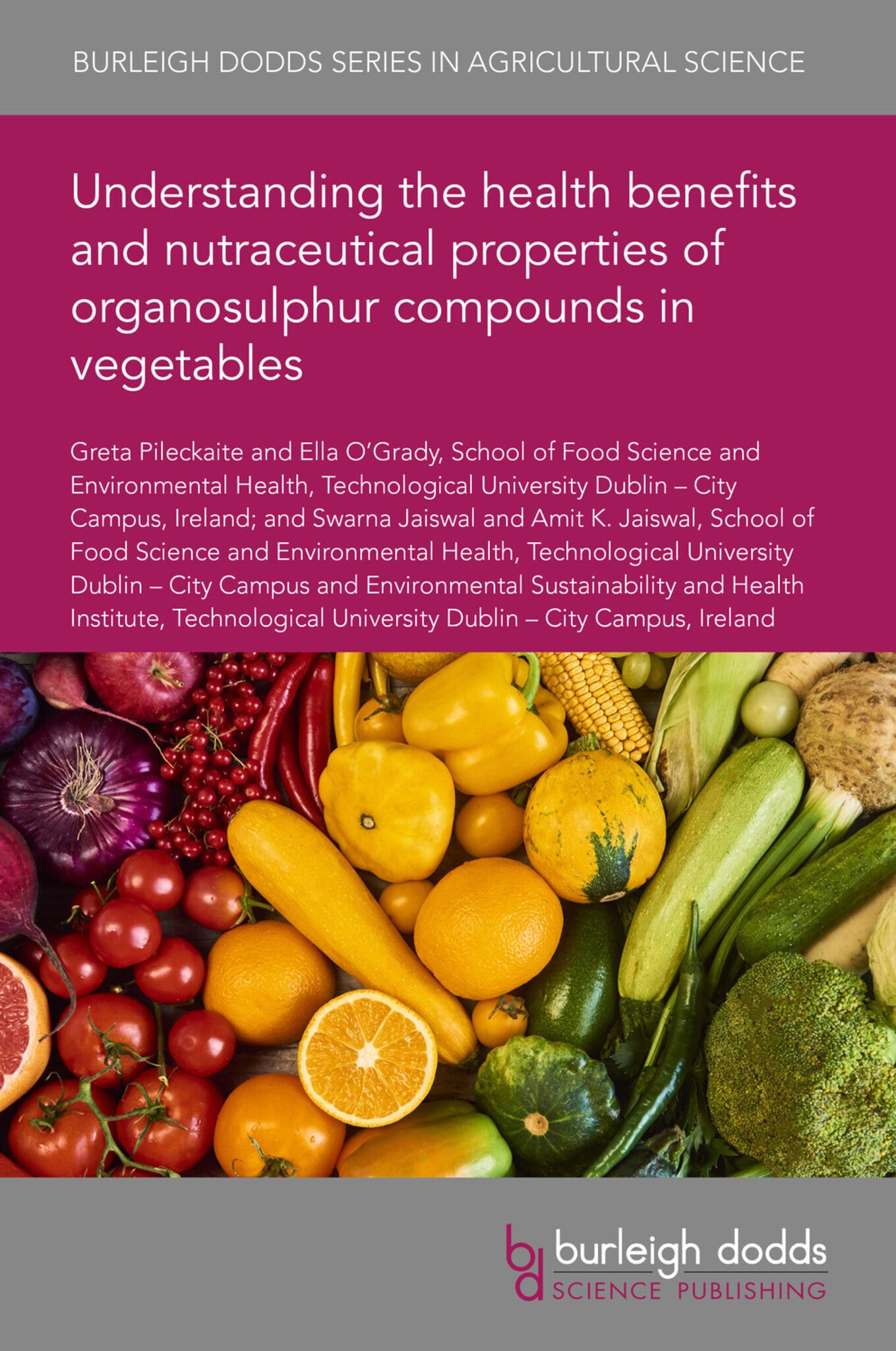We're sorry. An error has occurred
Please cancel or retry.
Understanding the health benefits and nutraceutical properties of organosulphur compounds in vegetables
Regular price
£25.00
Sale price
£25.00
Regular price
£25.00
Unit price
/
per
Sale
Sold out
Re-stocking soon
Organosulphur compounds are typically identified by their unpleasant odours and comprise a wide variety of sulphur-containing organic molecules, abundant both in nature and in the body, which are f...
Read More

Some error occured while loading the Quick View. Please close the Quick View and try reloading the page.
Couldn't load pickup availability
- Format:
-
29 August 2022

Organosulphur compounds are typically identified by their unpleasant odours and comprise a wide variety of sulphur-containing organic molecules, abundant both in nature and in the body, which are found in a variety of vegetables such as garlic, onions, chives and leeks. There are a number of health benefits linked to allicin, with Allium sativum L. inhibiting NF-B (nuclear factor kappa B) activity, while Alliacaea inhibit COX-1 (cyclooyygenase) and 12-LOX (lipoxygenase) activity leading to anti-inflammatory functions. Other health benefits include anticarcinogenic and antioxidant activity, improved immune function and a beneficial role in neurodegenerative disorders such as Alzheimer’s or Parkinson’s disease. In the food industry, organosulphur compounds are utilised as food dyes, sulphur dioxide preservatives and sweeteners, all of which must be clearly indicated on the food label, as sulphur is 1 of 14 allergens. This chapter highlights the bioavailability of organosulphur compounds, health benefits and nutraceutical applications.

Price: £25.00
Publisher: Burleigh Dodds Science Publishing
Imprint: Burleigh Dodds Science Publishing
Series: Burleigh Dodds Series in Agricultural Science
Publication Date:
29 August 2022
ISBN: 9781801465618
Format: eBook
BISACs:
SCIENCE / Life Sciences / Horticulture, Commercial horticulture, TECHNOLOGY & ENGINEERING / Agriculture / Sustainable Agriculture, TECHNOLOGY & ENGINEERING / Agriculture / Agronomy / Crop Science, Sustainable agriculture, Agricultural science, Agronomy and crop production

1 Introduction 2 Bioavailability of organosulphur compounds 3 Health benefits of organosulphur compounds 4 Nutraceutical applications 5 Conclusion and future trends 6 Where to look for further information 7 References



